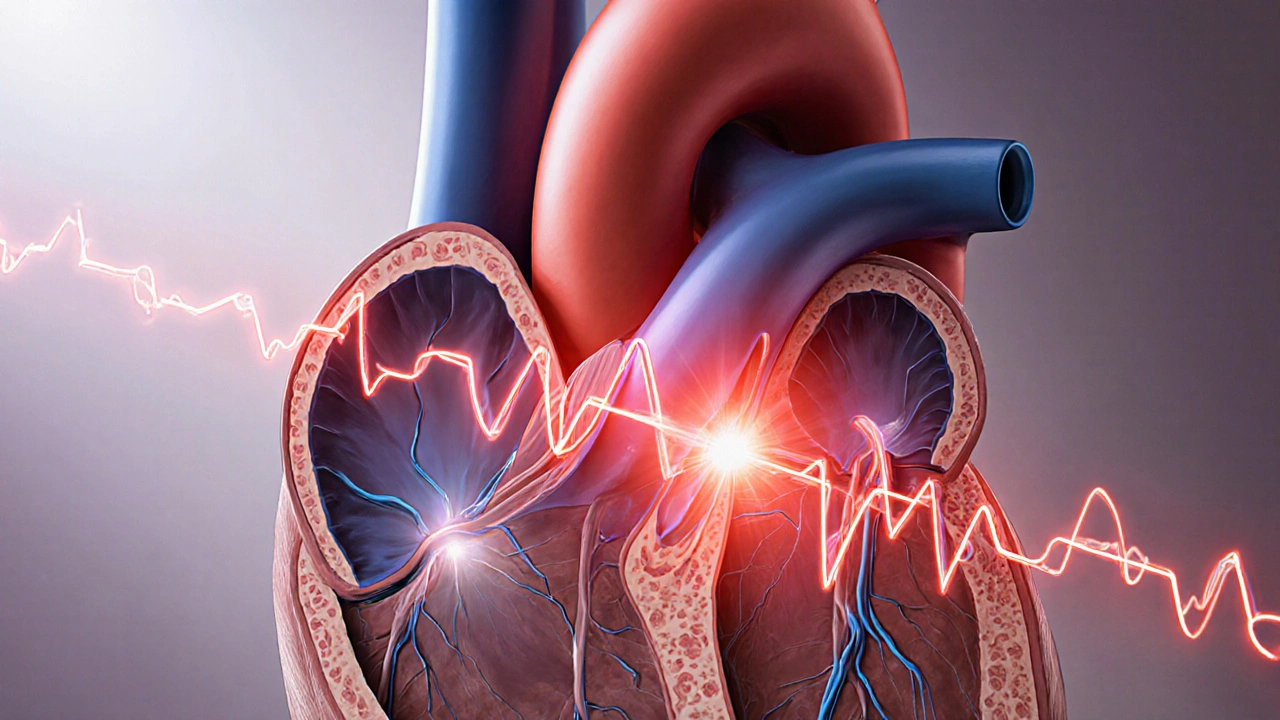AVNRT: What It Is and Why It Matters
Did you ever feel your heart bolt like a drumbeat out of nowhere? That sudden rush is often the hallmark of AVNRT, a fast heart rhythm caused by a re‑entrant circuit in the AV node. Also known as Atrioventricular Nodal Reentrant Tachycardia, it belongs to the broader family of arrhythmia, any abnormal heart rhythm and more specifically, a type of supraventricular tachycardia, a rapid rhythm that originates above the ventricles. Most patients notice palpitations, light‑headedness, or a brief feeling of panic that lasts from a few seconds to several minutes. The condition accounts for roughly 20‑30 % of all documented supraventricular tachycardias, making it one of the most common rhythm disorders seen in emergency rooms. While it rarely poses a life‑threatening risk, the unpredictability can disrupt daily life and trigger anxiety. Understanding AVNRT helps you recognize when a fast heartbeat is more than just a fleeting flutter.
How Doctors Diagnose and Treat AVNRT
When a patient reports sudden rapid beats, clinicians often turn to an electrophysiology study, an invasive test that maps the heart’s electrical pathways. This procedure pinpoints the exact re‑entry circuit and confirms that the fast rhythm originates in the AV node. Once the pathway is identified, the most definitive cure is catheter ablation, a minimally invasive technique that uses heat or cold energy to destroy the tissue causing the loop. Success rates for ablation exceed 95 %, and most people return to normal activities within a week.
For patients who prefer a non‑invasive approach or whose anatomy makes ablation risky, medication is the first line of defense. beta‑blockers, drugs that slow the heart’s conduction and blunt the sympathetic response are commonly prescribed to reduce episode frequency. Calcium‑channel blockers and certain anti‑arrhythmic pills serve as alternatives when beta‑blockers are not tolerated. Lifestyle tweaks—avoiding excessive caffeine, managing stress, and getting regular sleep—can also temper the triggers that set off an AVNRT episode.
The articles below pull together the same practical mindset you’ve just read about. Whether you’re curious about the safety of buying generic heart meds online, want a clear rundown of side‑effects for anti‑arrhythmic drugs, or need tips on managing medication costs, our collection covers the whole spectrum. You’ll find guides that explain drug mechanisms, compare treatment options, and even walk you through safe online pharmacy practices. All of these pieces tie back to the core ideas of diagnosis, therapy selection, and everyday management of AVNRT, giving you a one‑stop resource to stay informed and in control.

Supraventricular Tachycardia Types Explained: AVNRT, AVRT, Atrial Tachycardia & More
- by Colin Edward Egan
- on 14 Oct 2025
Learn the key SVT types-AVNRT, AVRT, atrial tachycardia, and more-how they differ, how they're diagnosed, and the best treatment options.
